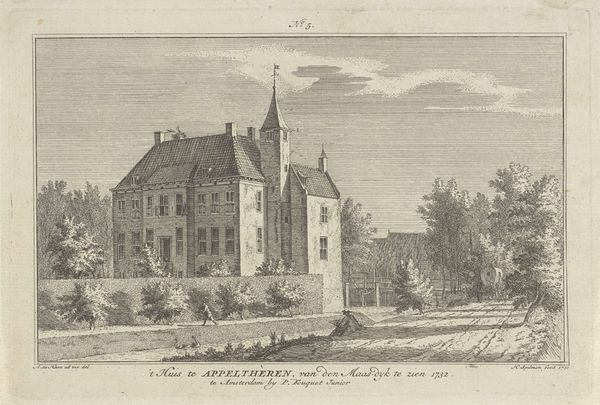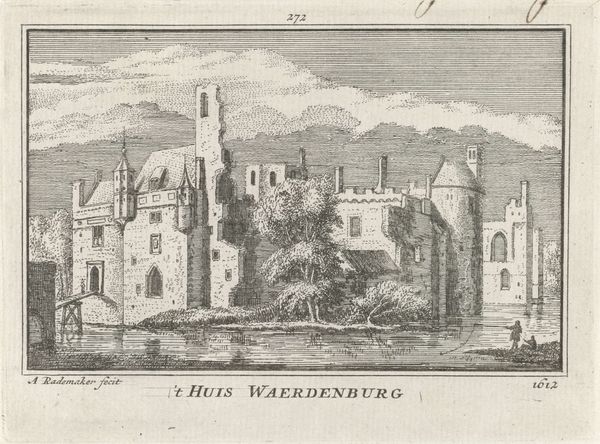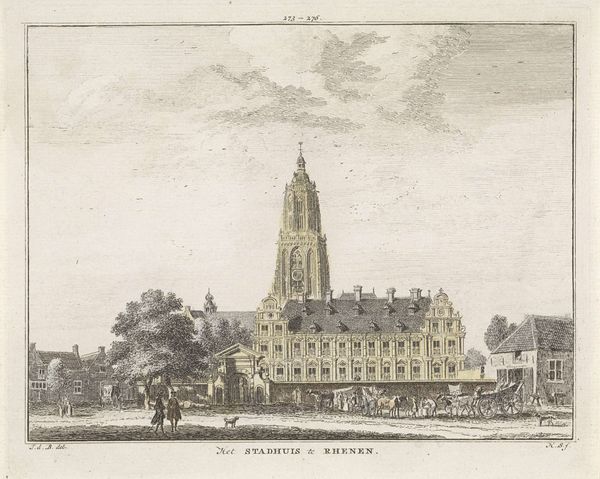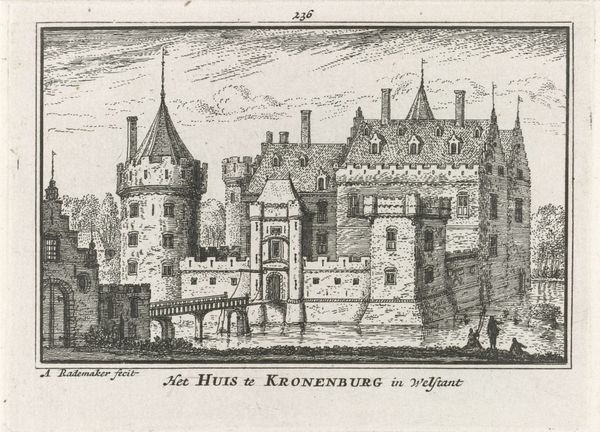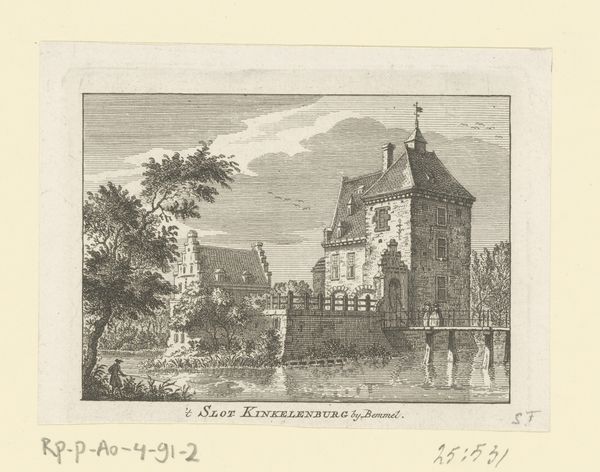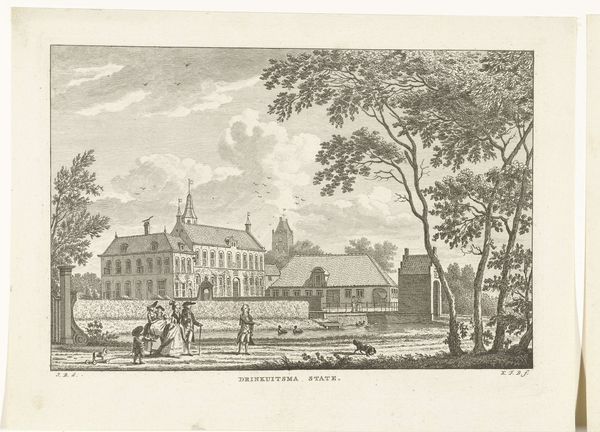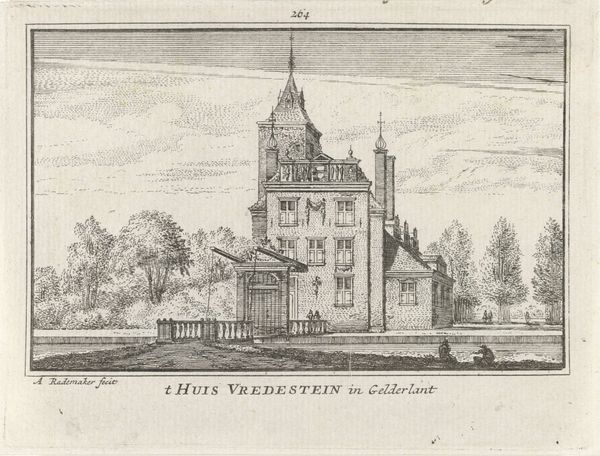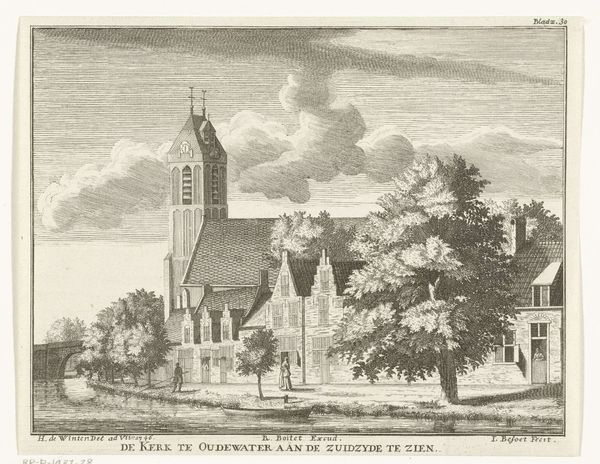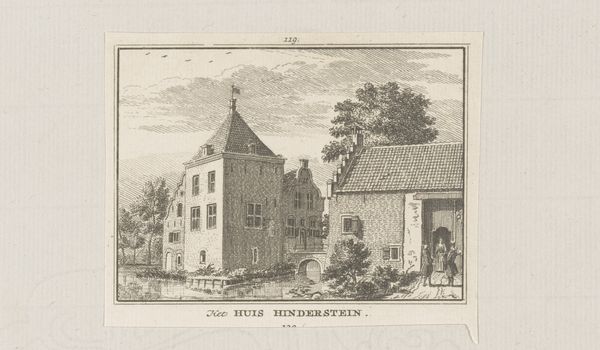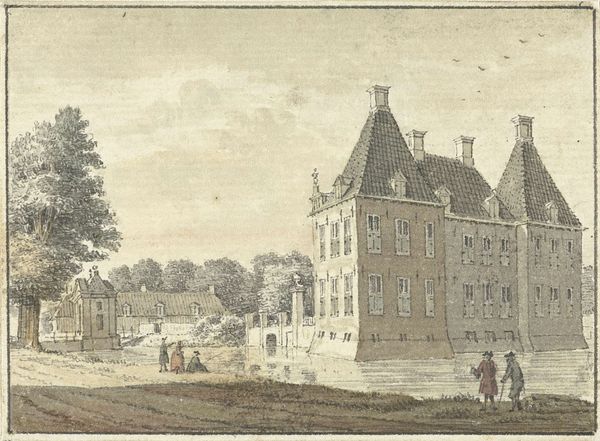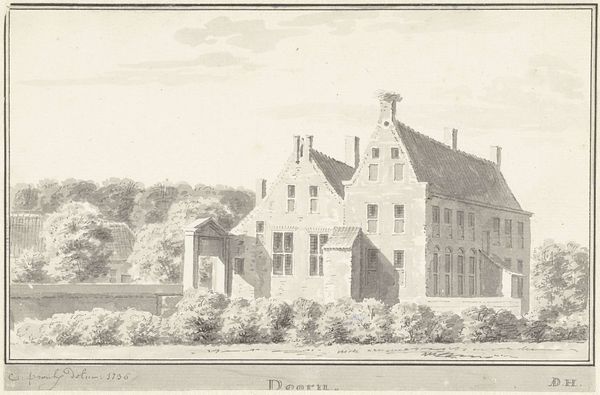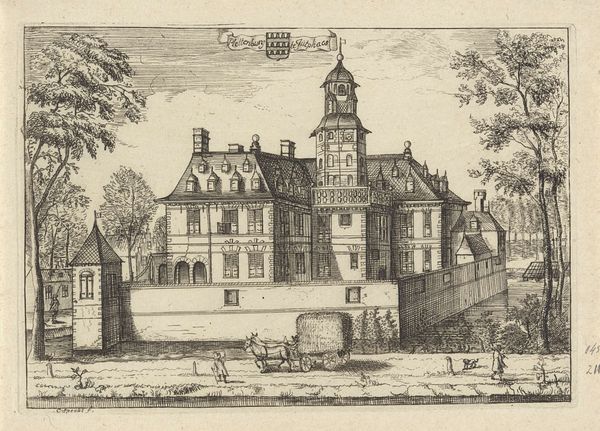
print, etching, engraving
#
baroque
# print
#
etching
#
landscape
#
cityscape
#
engraving
Dimensions: height 80 mm, width 115 mm
Copyright: Rijks Museum: Open Domain
Editor: This is "Gezicht op Huis Kronenburg," a print made with etching and engraving by Abraham Rademaker sometime between 1727 and 1733. The first thing that strikes me is the contrast between the solid architecture and the whimsical, almost fluffy rendering of the trees and sky. What do you see in this piece? Curator: It’s a fascinating image. I'm drawn to how Rademaker uses light and shadow not just to depict form but to imbue meaning. Notice the play of light across the facade. The crisp lines of the building against the softer lines of nature suggest a narrative of control versus freedom, a tension often present in Baroque landscapes. Does the ruin on the right side of the house signify decay, and time taking its toll on the established order, do you think? Editor: I hadn't considered that! The ruin adds a layer of complexity, suggesting mortality even amidst the grandeur. Are there other symbols that might carry a particular weight? Curator: The horse and carriage might represent movement, travel, and social status. Think about the formal gardens implied here, juxtaposed with the untamed wilderness suggested in the background. What emotional resonances do you find in these symbols? What cultural stories are being told? Editor: It's interesting how those symbols of wealth and status also imply a human presence and a connection to daily life, a sense of narrative that pulls the viewer in. Curator: Exactly. The symbolism acts as a cultural mirror reflecting the values and anxieties of the period. Each image adds to the collective memory, each scene an evocation. Thank you for pointing this out. Editor: This has given me a much deeper appreciation for the print and how even seemingly simple landscapes can be so rich in cultural meaning.
Comments
No comments
Be the first to comment and join the conversation on the ultimate creative platform.
